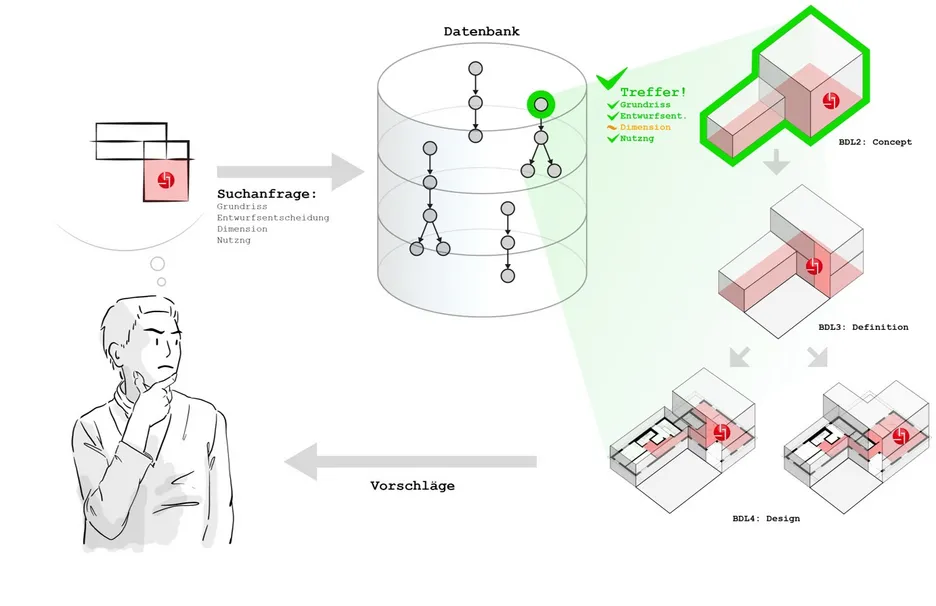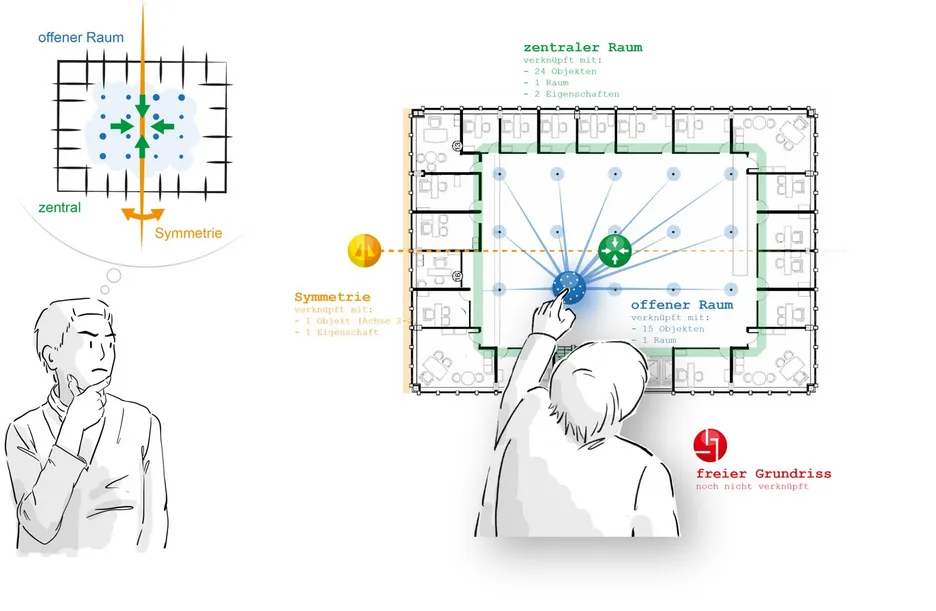EarlyBIM:
Data-driven evaluation of design variants
Motivation
- inadequate documentation of the design process, especially subjective decisions
- no adequate support when searching in model-based reference databases
- Deficits in the development of the inherent knowledge of references including design development
- inadequate integration of the potential assessment in the design process
Scientific goals
- Documentation of qualitative decisions in the evaluation and selection of variants
- Evaluation of variants based on references and the use of (partial) aspects for further development
- Evaluation of potentials and performance in design branches of similar references expanded by imperfection (uncertainty, vagueness, inaccuracy)
Work program and methods
WP 1: Specialist vocabulary - qualitative assessments
- Structuring of technical vocabulary and its (partially) formal mapping
WP 2: Relationships between vocabulary and model content
- Description of the relationships between technical vocabulary and model parameters including formal presentation and database
WP 3: Interaction concept - recording qualitative evaluation
- Conception of a text-based episodic description (design stories), selection lists of keywords and "visual keys",
- Studies on visual representations

WP 4: Potential assessment using references
- Investigation of activities in the assessment of potential
- Deriving criteria and identifying parameters
WP 5: Similarity determination and search
- Investigation of text-based similarity search
- Definition of text and graph based similarity metrics
- Definition of global similarity measures
WP 6: Visualization methods of potentials
- Examination of the representation of potentials and their strengths and weaknesses profiles & the levels of detail including the evaluation in design branches of the references
Collaboration
- Deriving a concept for recording the evaluation of architectural quality and potential evaluation, e.g. thermal comfort, daylight comfort and structural system (cooperation with WP4 and WP5)
- Conception of similarity measures (collaboration with WP2 on graph-based retrieval and search methods)
- Development of a repository, which in addition to semantic building models also includes the design history including evaluations and decisions (cooperation with WP1 and WP2)
- Prototypical implementation and evaluation (cooperation with WP1, WP2, WP4 and WP5)

